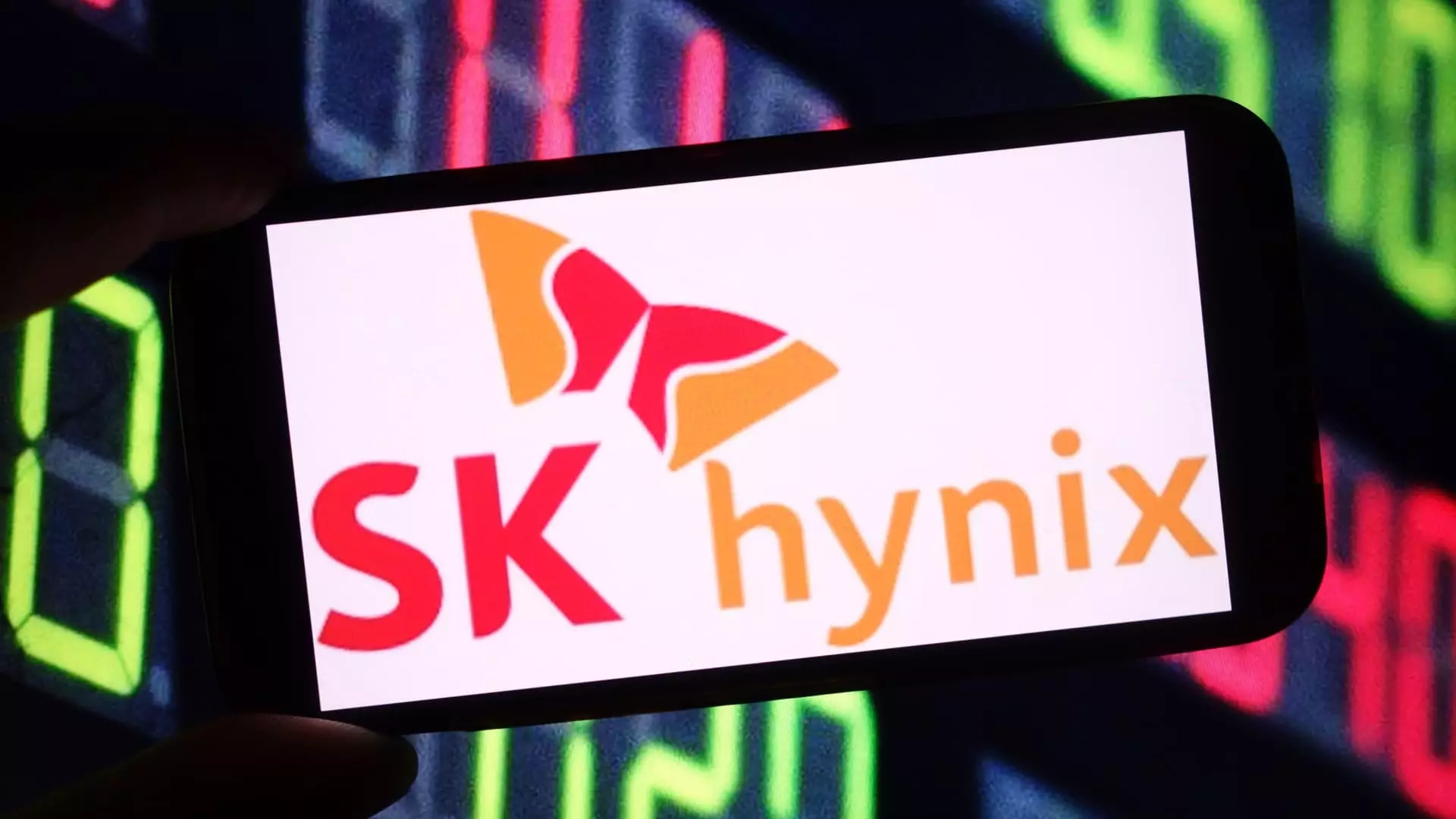In a remarkable display of resilience and strategic positioning, South Korea’s SK Hynix recently reported its earnings for the first quarter, showcasing a staggering 158% year-on-year increase in operating profit. With a revenue of 17.64 trillion won ($12.36 billion), surpassing expectations, the company has not only reaffirmed its leadership in the semiconductor sector but is also riding the wave of growing demand for high bandwidth memory (HBM) that powers the rapidly evolving generative artificial intelligence industry. This robust growth signals more than just numbers; it represents a pivotal moment in the technological landscape where companies that embrace innovation are reaping the benefits.
A Double-Edged Sword: AI Boom vs. Market Volatility
While the recent financial results paint an encouraging picture, SK Hynix has been vocal about the lurking threats posed by macroeconomic uncertainties. The company’s caution about the demand volatility created by changing tariff policies serves as a stark reminder that even giants in the industry cannot afford to rest on their laurels. The discrepancy in revenue growth—42% year-on-year but an 11% drop compared to the previous quarter—raises questions about the sustainability of this upward trajectory. It calls into focus the unpredictable nature of the global market where geopolitical factors can unexpectedly influence supply chains and demand cycles.
The AI Catalyst: Driving Future Growth
SK Hynix is riding high on the AI wave, as indicated by its strategic alliances with industry heavyweights such as Nvidia. The company’s pivotal role in supplying HBM to AI servers underscores its integral position in the tech ecosystem. Big Tech continues to funnel investments into AI, and with the rise of “sovereign AI projects” and open-source models, the appetite for advanced memory solutions is not just a fleeting trend; it’s a revolution. The question remains—will SK Hynix capitalize fully on this momentum, or will it find itself vulnerable amid the unpredictable tides of technological demand?
Competition: The Landscape of Memory Solutions
In an industry characterized by cut-throat competition, SK Hynix is not merely contending with domestic rival Samsung Electronics but also with Micron Technology, both of which are vying for market share in the lucrative HBM space. As demand surges, so too does the race to innovate and optimize production capabilities. In this context, SK Hynix’s strategy to emphasize its high-performance memory solutions becomes a critical differentiator. However, the emerging competitive landscape necessitates aggressive investment in R&D and infrastructure to maintain the lead, a challenge that could strain resources as the company navigates economic headwinds.
Looking Forward: A Cautious Optimism
The forecasts for the second half of the year suggest a blend of cautious optimism and uncertainty. While SK Hynix projects that demand for AI-related memory will persist, the shadows of potential market disruptions cannot be overlooked. As the memory chipmaker looks to the future, its ability to balance growth with adaptability will be crucial. The confluence of technological advancement, market fluctuations, and economic policy will continue to shape the narrative for SK Hynix as it immerses itself deeper into the realms of AI and beyond. The road ahead is fraught with challenges, but for a company anchored in innovation, the potential for groundbreaking achievements remains tantalizingly close.

